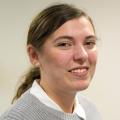
SOUTH Lakeland’s railway stations got busier with more journeys made last year, bolstering hopes passengers will return after the Covid-19 pandemic.
Pressure group Railfuture said the impact of current travel restrictions is causing a “temporary blip” in the continued growth in railway usage nationally.
Office of Road and Rail data shows an estimated 2.1 million passengers using South Lakeland's 14 stations in 2019-20.
That's 213,000 more than the previous year, a rise of 11.2%.
The busiest station was Oxenholme Lake District with 658,000 entries and exits by passengers, followed by Windermere, 406,000, and Ulverston, 323,000.
The least used station was Dent with passenger usage at 8,126. It was followed by Garsdale, 15,800, and Kirkby-In-Furness, 17,526.
Across the North West, usage of railway stations increased by 17.1 million to 250.8 million in 2019-20, while across Britain it fell 1.1% to 3 billion.
The ORR has put the national reduction in journeys down to a “dramatic drop” in passengers in March due to Covid-19 restrictions, with lockdown introduced on March 23.
But Railfuture, an independent organisation with 20,000 members, is hopeful the railway system will recover.
Bruce Williamson, a spokesman for the group, said: “I am very confident that the railways will bounce back when Covid-19 is over.
“We can’t ignore the fact the world has changed and people working from home may stay put – but I still feel for the most part, things will return to normal.
“Considering the underlying trend of increased rail usage over the past 30 years, we have to look at Covid-19 as a temporary blip.”
In South Lakeland there were 20 passenger journeys for every person living in the area in 2019-20 compared to the national rate of 75.
Jay Symonds, ORR senior statistical analyst, said: “The dramatic drop in passenger numbers towards the end of March due to Covid-19 explains much of the drop in usage compared to last year.”
He added: “With numbers staying at historically low levels during 2020, there is no doubt that next year will look a lot different.”



Comments: Our rules
We want our comments to be a lively and valuable part of our community - a place where readers can debate and engage with the most important local issues. The ability to comment on our stories is a privilege, not a right, however, and that privilege may be withdrawn if it is abused or misused.
Please report any comments that break our rules.
Read the rules hereLast Updated:
Report this comment Cancel